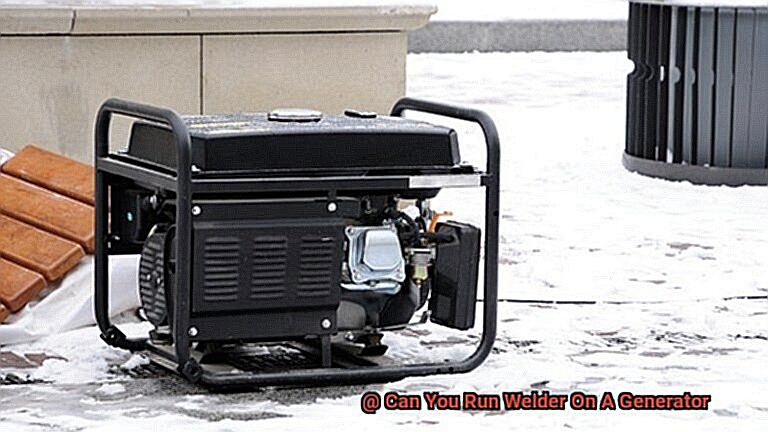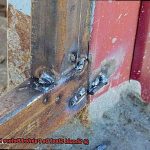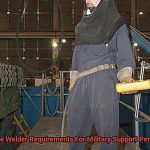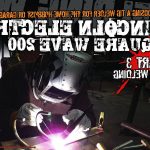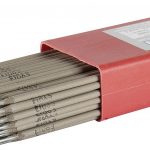Are you a DIY enthusiast or a professional welder itching to start your next project, but struggling with the lack of a power source?
Fear not, because the answer to your problem is a resounding YES – you can run your welder on a generator. Welding machines require a considerable amount of energy, and using them in areas with no power source can be a daunting task.
Fortunately, running your welder on a generator can save the day. But before you get too excited and start connecting your welding machine to any old generator lying around, it’s crucial to understand which types of welders are compatible with generators and what capacity your generator needs to power your welding equipment.
Not all generators are suitable for welding, and not all welding machines can work on generators without causing severe damage. In this blog post, we’ll dive deep into the question “Can you run a welder on a generator?”
You’ll discover the types of welders that work best with generators, the required capacity for various welding machines, and essential factors to consider when using a generator for seamless welding.
We’ll also explore how to select the right generator for your specific welding needs so that you can tackle remote projects or power outages without worries.
What Type of Generator is Needed to Run a Welder?
Contents
Choosing the right type of generator is crucial for optimal performance.
Not every generator can handle the power requirements of a welder, and selecting the wrong one can lead to poor weld quality or even damage to both the generator and welder. One of the most important factors to consider when selecting a generator for your welding needs is wattage output.
A welder typically requires a minimum of 5000 watts to operate, but this can vary depending on the type of welder and the thickness of the metal being welded. It’s essential to choose a generator that can handle the maximum wattage output of your welder to ensure consistent performance.
Another critical factor to consider is the type of generator. Welders require a stable and consistent power source, making inverter generators the best choice.
Inverter generators use advanced technology to produce clean and stable power ideal for sensitive electronics like welders. With an inverter generator, you can be confident that your welder will receive constant power flow without any interruptions.
In addition to wattage output and type, other features like fuel efficiency, noise level, and portability should also be considered when selecting a generator. These factors can make a significant difference in convenience and ease of use.
It’s important to note that choosing the right generator for your welding needs requires careful consideration of your specific requirements and budget. By selecting a high-quality generator that meets your needs, you can ensure reliable power for all your welding projects.
What Size Generator is Required for Different Welders?
The size of the generator needed is determined by the type of welder used and its power consumption.
For smaller MIG and TIG welders, it’s recommended to use a generator with a capacity of at least 5,500 watts. This ensures that the welding machine operates smoothly without any hiccups.
For larger welders such as stick welders or plasma cutters, a higher capacity generator is required. A 200-amp stick welder needs a generator with a minimum capacity of 7,000 watts while a 300-amp stick welder requires at least 10,000 watts.
Similarly, for plasma cutters, a generator with a minimum capacity of 10,000 watts is recommended for those with a cutting capacity of up to one inch. It’s noteworthy that the size of the generator required may vary depending on the specific brand and model of the welding machine.
Therefore, it’s best to consult the manufacturer’s specifications before purchasing a generator.
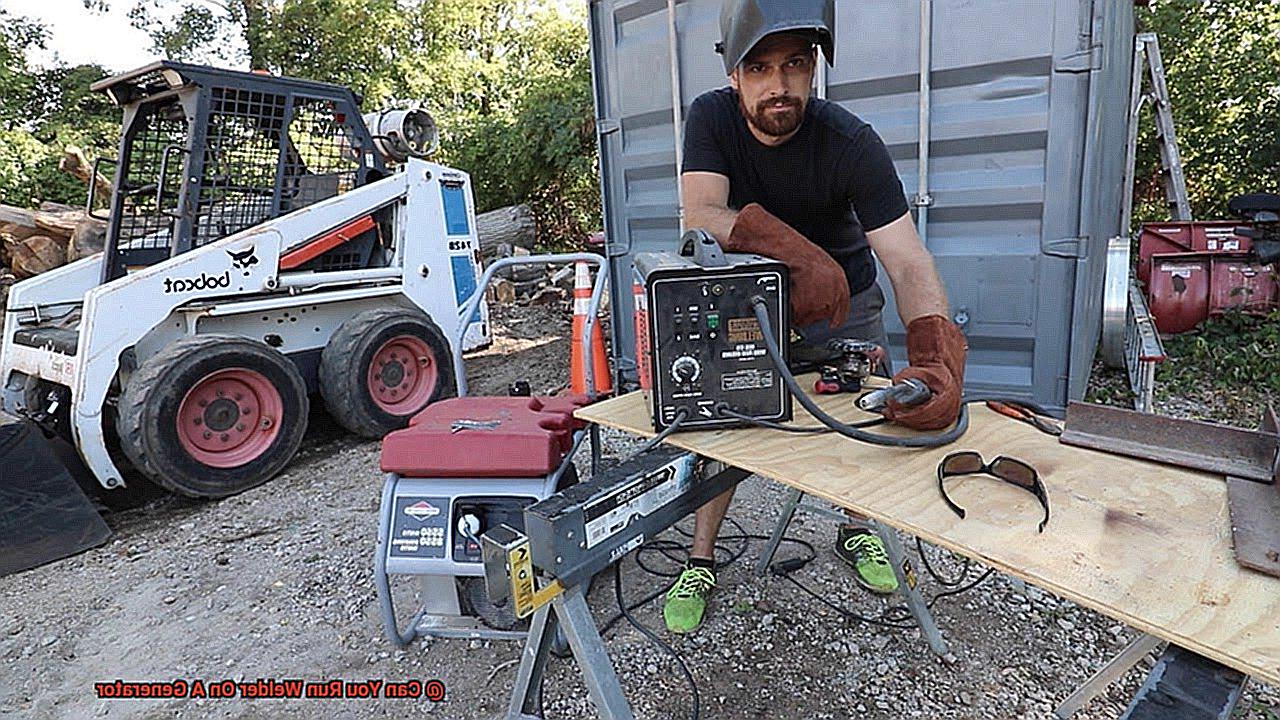
So, choosing the right size generator for your welding machine is crucial to ensure optimal performance and avoid damaging both the generator and welder.
Are All Generators Suitable for Welding?
It’s important to know that not all generators are suitable for welding.
In fact, using the wrong type of generator can not only damage your welding machine but also create a safety hazard. So, let’s dive into the reasons why not all generators are suitable for welding.
Firstly, the type of generator matters. There are two main types of generators: conventional and inverter.
Conventional generators are cheaper, but they produce inconsistent power output, which can cause problems when welding. In contrast, inverter generators provide stable and consistent power output, making them a better choice for welding.
Another important factor is the power output of the generator. Welding machines require a significant amount of power, so it’s vital to choose a generator that can provide enough power to run the machine without overloading or damaging the generator.
Generally, a generator with a minimum of 6,000 watts of continuous power output is recommended for welding.
You also need to consider the type of welding you’ll be doing when choosing a generator.
Different types of welding require different levels of power and amperage. For example, TIG welding requires less power and amperage than MIG or stick welding.
Be sure to choose a generator that can handle the specific type of welding you’ll be doing. In addition to these factors, it’s crucial to choose a generator that has good voltage regulation and low total harmonic distortion (THD).
Voltage regulation ensures that the generator provides consistent voltage output, while low THD ensures that the power output is clean and stable. To summarize, it’s essential to choose the right size and type of generator that suits your welder’s power consumption needs and can handle the specific type of welding you’ll be doing.
Remember, using the wrong generator can not only damage your welding machine but also create a safety hazard.
How to Ensure Stable Power Output from Your Generator?
Whether you’re working on a construction site or in a remote location, running a welder on a generator can be incredibly convenient. However, ensuring stable power output from your generator is crucial to produce high-quality welds without any interruptions or issues. Here are five key factors to keep in mind:
Choose the Right Generator for Your Welding Needs
Choosing the right generator is essential when running a welder.
To ensure stable power output, make sure that the generator can handle the wattage requirements of your welder and has a high enough amperage rating to power your welding machine.
This will help avoid issues with arc stability and produce consistent, high-quality welds.
Keep Your Generator Maintained
Maintaining your generator is critical to ensure that it’s running smoothly and providing a steady flow of power.
Regular maintenance includes changing the oil and filters regularly, checking the spark plugs and battery, and cleaning the carburetor and fuel system.
Neglecting maintenance can cause fluctuations in power output, leading to poor weld quality or even damage to the welder.
Use High-Quality Fuel
Using high-quality fuel is crucial for maintaining a stable power output from your generator when running a welder. Poor quality fuel can cause the generator to run inefficiently, leading to fluctuations in power output.
Make sure to use fresh fuel and avoid using old or contaminated gasoline. This will help keep your generator running smoothly while also preventing any damage to your welding equipment.
Monitor Power Output
Monitoring power output is essential to prevent voltage or frequency fluctuations that can cause damage to both the welder and the generator. You can use a voltage regulator or stabilizer to maintain a consistent power supply, which will help prevent any damage to your welding equipment.
Take Safety Precautions
Running a welder on a generator requires taking safety precautions. Make sure to wear protective gear and follow all safety guidelines for both the welder and the generator. Additionally, keep flammable materials away from the work area and ensure proper ventilation to prevent the buildup of toxic fumes. By following these safety precautions, you can stay safe while also ensuring stable power output from your generator when running a welder.
What Types of Welding Require a More Stable Power Source?
The truth is, not all welding processes are created equal, and some require a more stable power source than others to produce high-quality welds.
If you’re planning on TIG welding or MIG welding, you need to ensure that your generator provides a constant and stable power source. TIG welding uses a high-frequency arc that maintains a consistent arc length, which can be easily disrupted by any fluctuation in the power source.
Similarly, MIG welding requires a stable power source because it uses a wire feed system that requires consistent voltage and amperage. Any variation in the power output can affect the wire speed and result in poor weld quality.
Stick welding is more forgiving when it comes to power sources, but even with stick welding, a more stable power source will result in better weld quality. Stick welding can operate on a wider range of voltages and amperages, making it more versatile than TIG or MIG.
To ensure consistent performance and produce high-quality welds, it’s crucial to consider the type of welding you will be doing when choosing a generator to run your welder. If you plan on doing TIG or MIG welding, you will need a generator with a more stable power output to ensure consistent performance.
In contrast, if you plan on doing stick welding, you can get away with a less stable power source but will still benefit from using a generator with a more stable output. When working with welding equipment, it’s essential to take safety precautions seriously.
Choosing the right generator, maintaining it regularly, using high-quality fuel, and monitoring power output are all critical factors to keep in mind. These simple steps can help ensure that your welds are of the highest quality while minimizing the risk of accidents.
Whether you’re working with TIG, MIG, or stick welding, choosing the right generator and taking safety precautions can make all the difference.
P0z7y6Rc44w” >
Conclusion
In conclusion, running a welder on a generator is not only possible but also extremely convenient for DIY enthusiasts or professional welders working in remote locations.
However, it’s crucial to understand the compatibility between your welding equipment and the generator you plan to use. Choosing the right generator is paramount for optimal performance.
Not all generators are suitable for welding, and that’s why inverter generators are the best choice as they provide stable and consistent power output. Moreover, it’s vital to select a generator with adequate wattage output and amperage rating that can handle the maximum wattage output of your welder.
Maintaining your generator regularly, using high-quality fuel, monitoring power output, choosing the right size generator based on specific welding machine requirements, and taking safety precautions are all critical factors to keep in mind when running a welder on a generator. Different types of welding require different levels of power and amperage.
For instance, TIG and MIG welding need a more stable power source than stick welding. Hence it’s essential to consider the type of welding you’ll be doing when selecting a generator.
